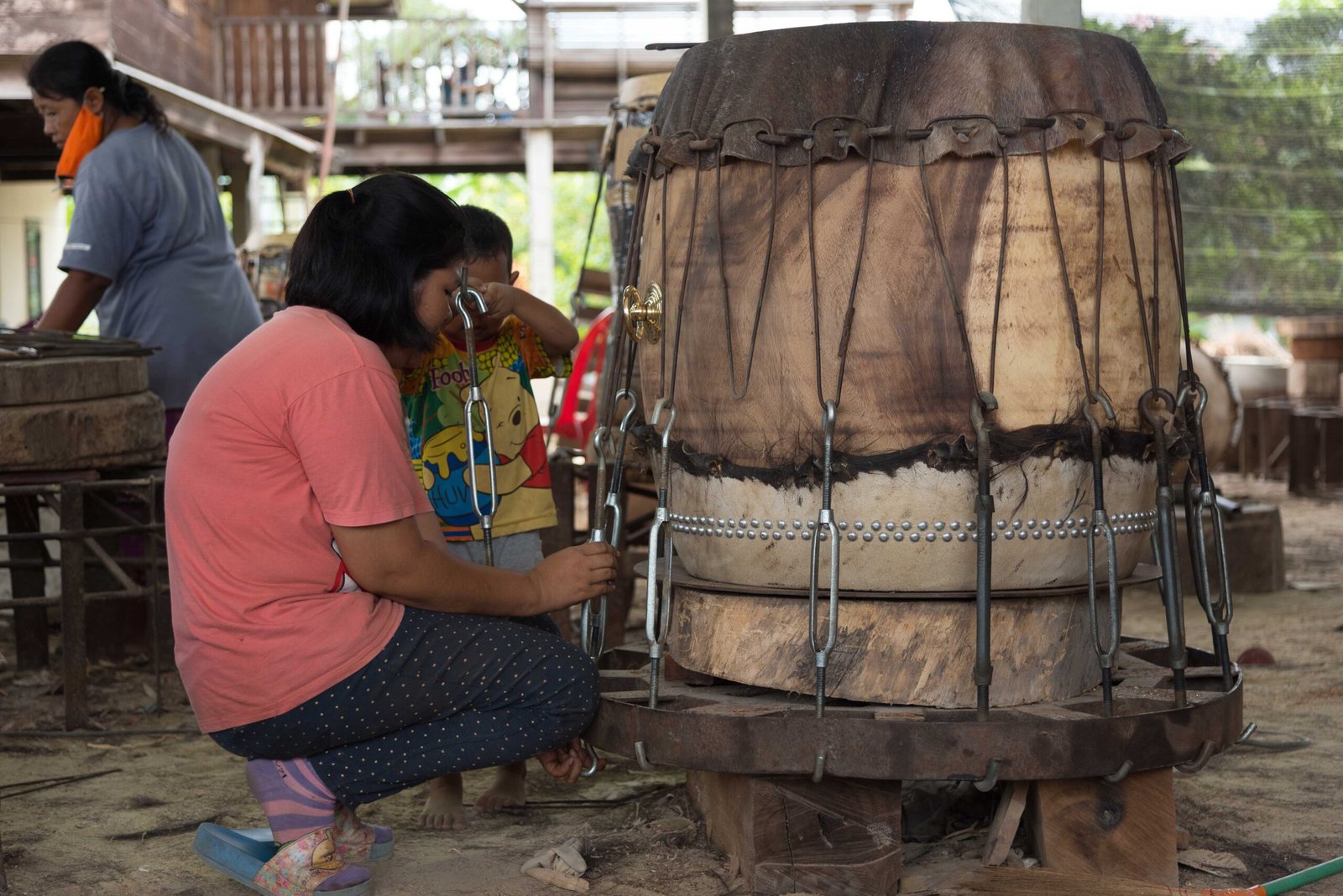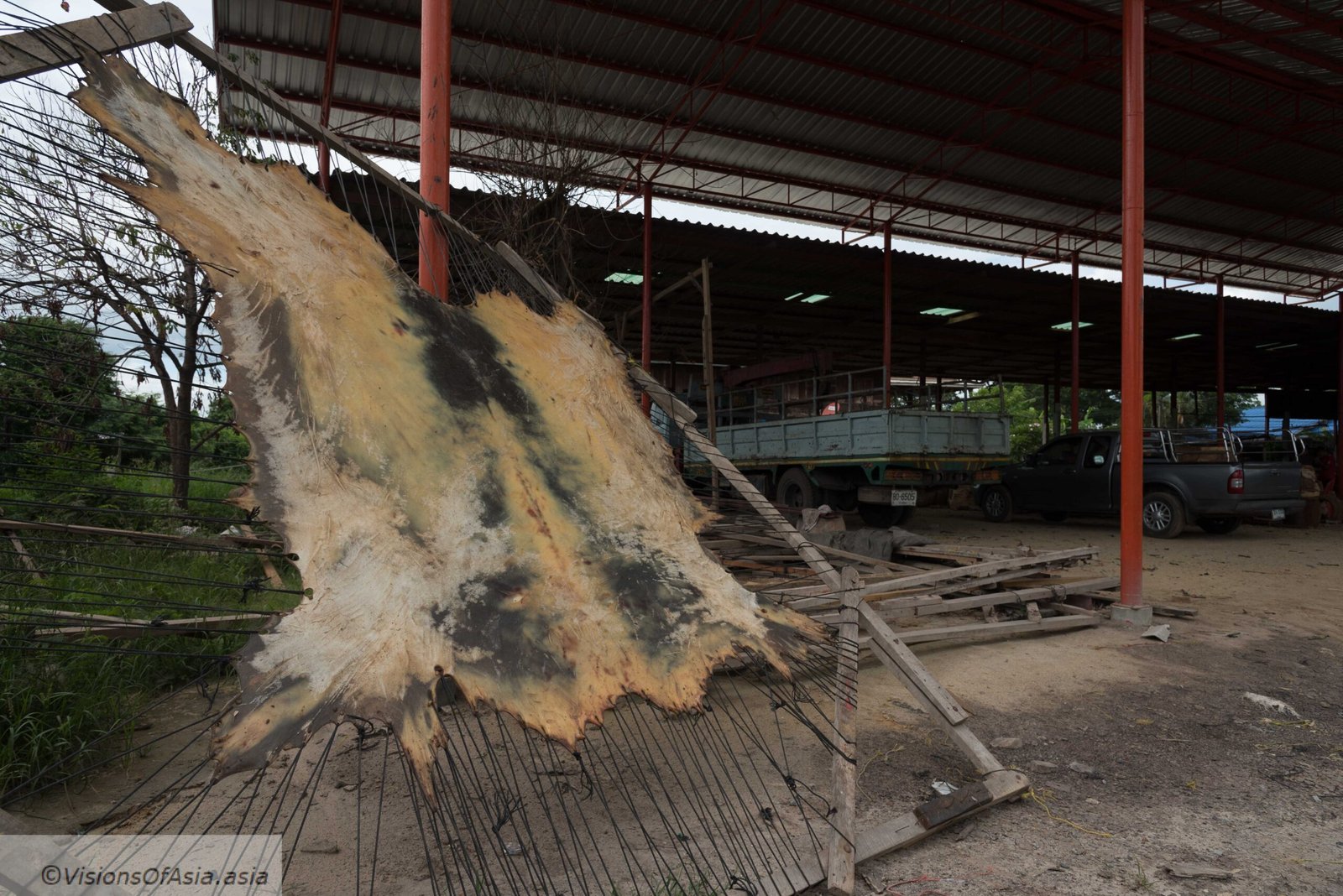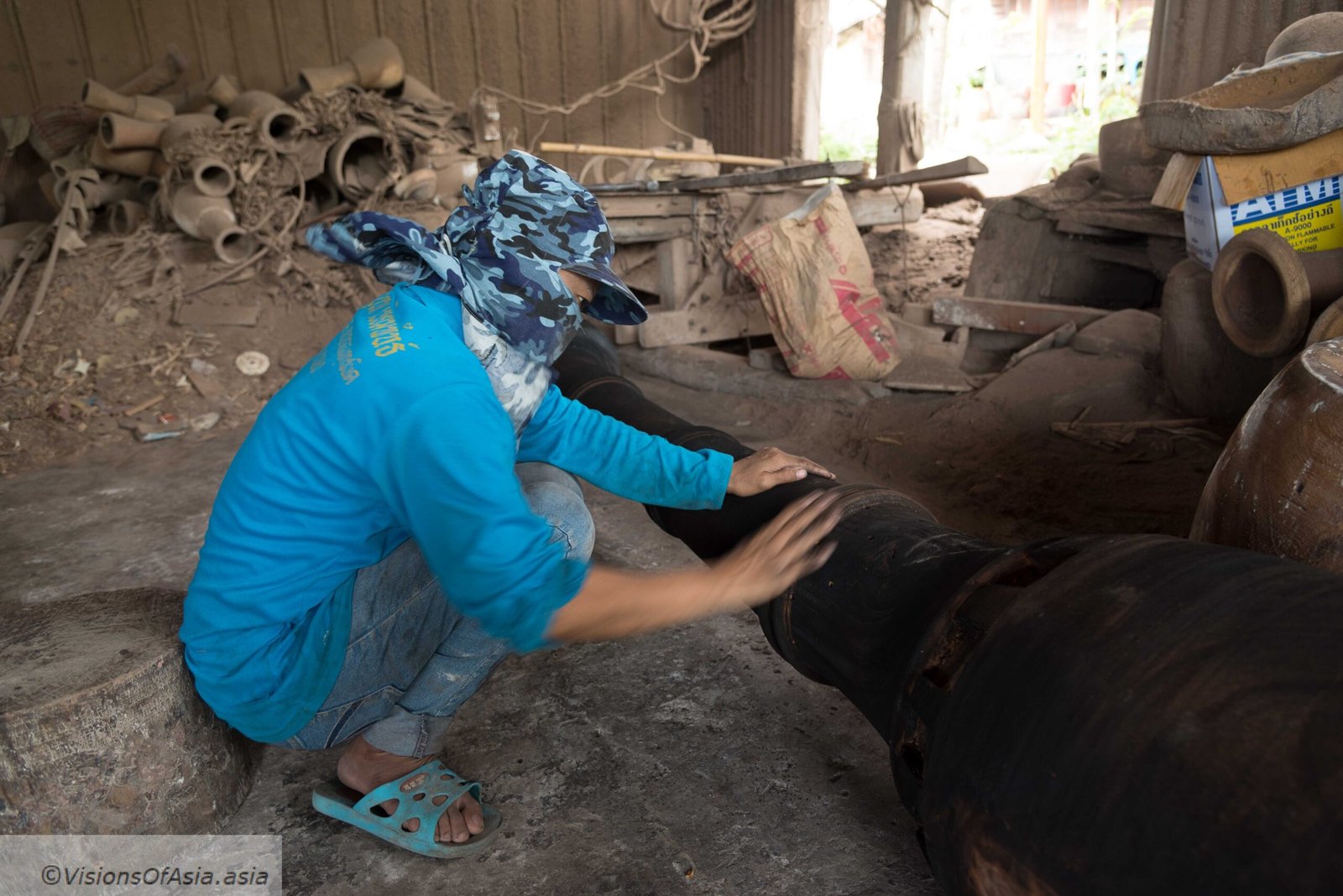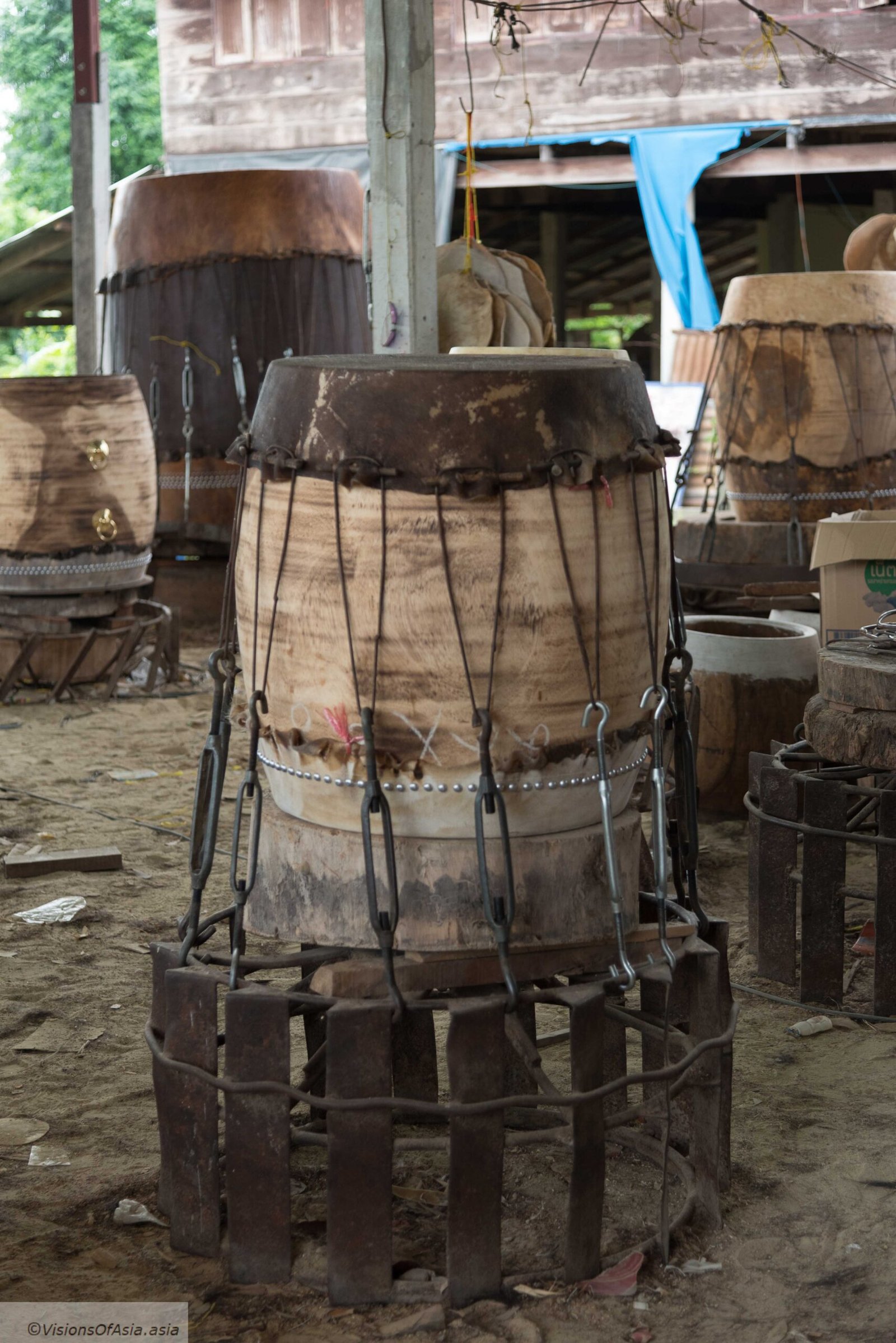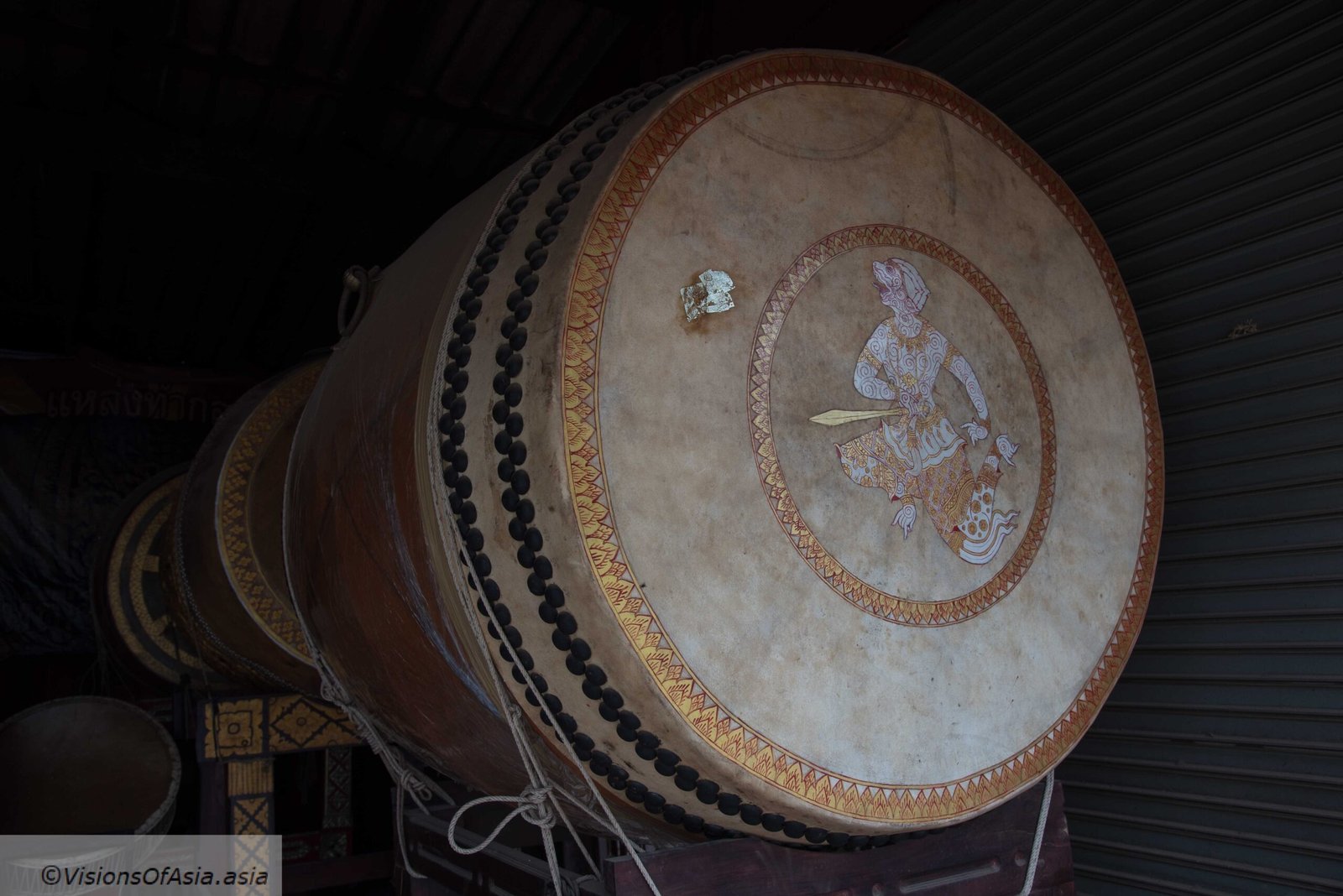In a previous post, I talked about Wat Sanam Chai, in the province of Suphanburi. When you are there or in Ayutthaya, it does not take much time, to go to Ekkarat drum manufacturing village.
This village is unique in that there are a number of traditional drum-making craft shops which still go on making drums while you visit. An excellent visit outside of the beaten tracks.
These drums are mainly used in temples or for religious occasions and the local craftsmen are proud to let you see the whole drum-making process.
A survival of an ancient tradecraft
While not very known, it is rare nowadays to still see a traditional craft being performed at various stages of development. During my visit in Ekkarat, back in 2016, I was able to see all the stages of a drum making (ok, not the finition).
The start: stretching a hide
It all starts with the hide. A large cow hide is stretched on a portico, to let it dry as well as to extend it to its maximum size. If you are lucky, you will see such a hide hung outside to dry.

Obviously, the drum membrane is both thin and dry to give the best sound. ISome smaller parts may be further left to dry for the small drums.
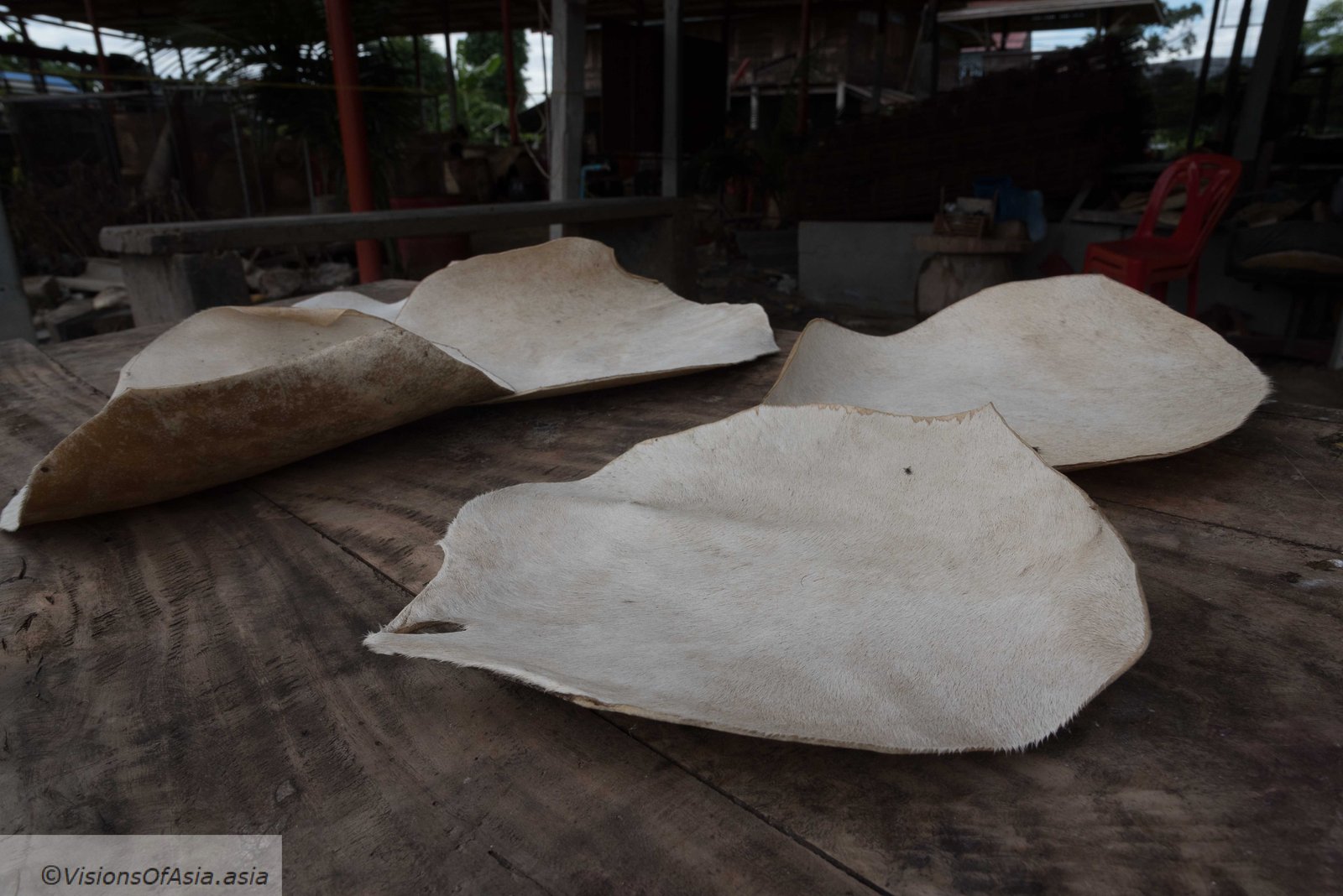
The central part of the drum: a tree trunk
While the hide for covering the drum is stretched and extended, the wooden body of the drum is prepared. For the bigger size drums, they use the whole trunk of a tree, which is then hollowed in a single piece on a machine as you can see in this picture.
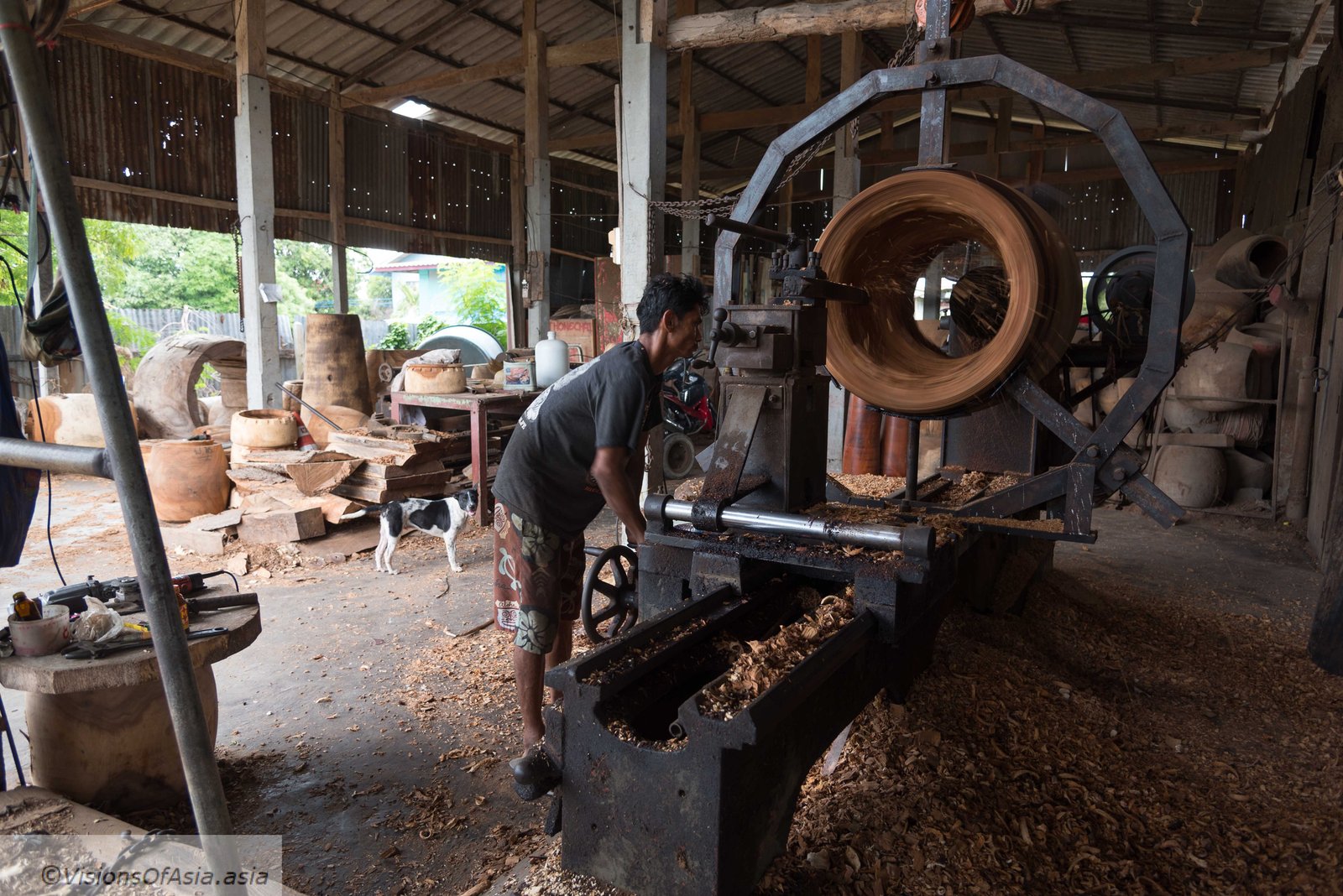
After the trunk takes its final shape, it is further polished by hand.
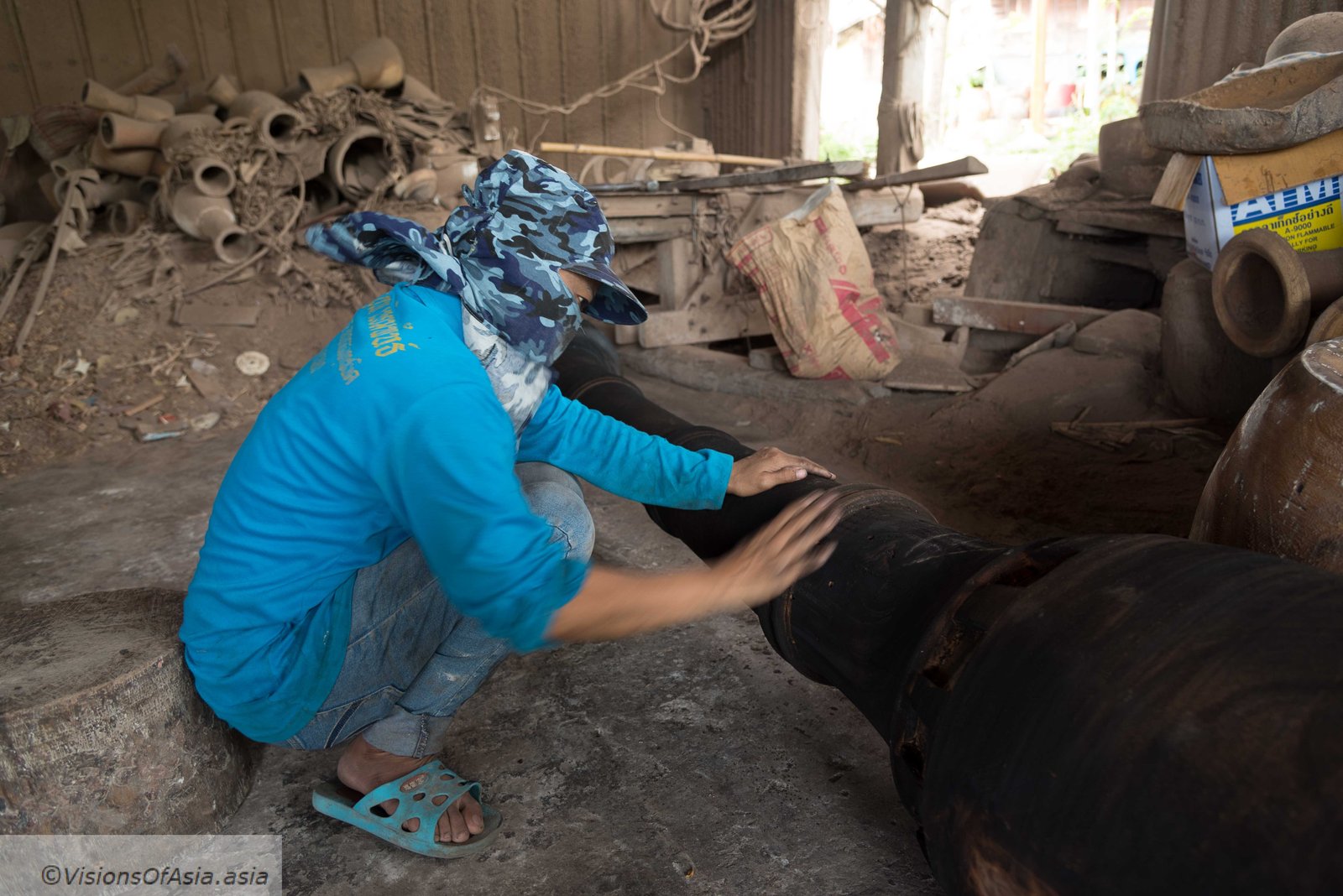
Stretching the membrane
The next important stage is stretching the membrane over the drum and leaving it in that position for some time, in order to avoid the hide retracting once the drum is complete. To do that, the drum-makers use metallic contraptions to stretch the hide across and pull it downward.
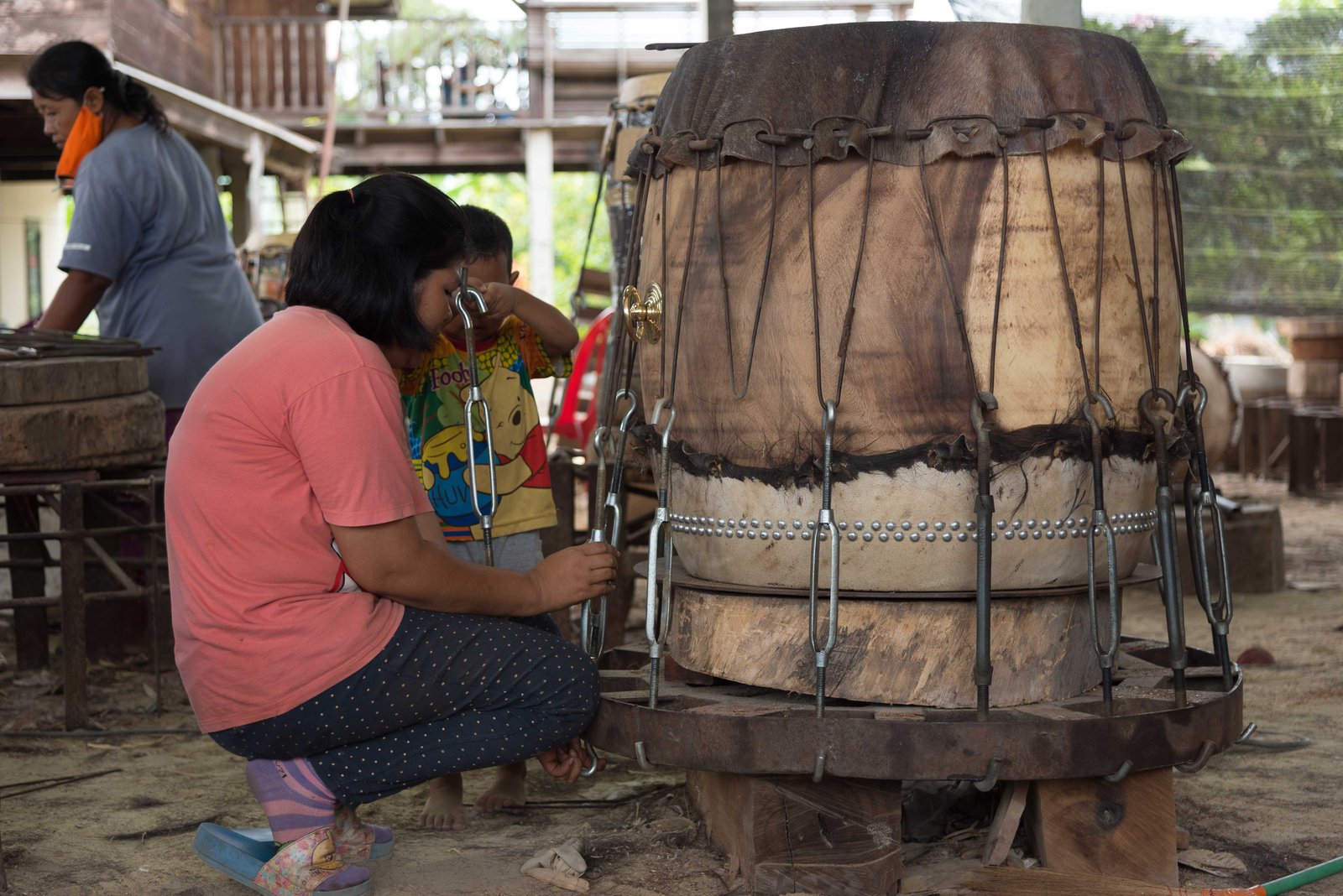
Once this is done, the drum is left to rest for a few days to let the materials take their final form.
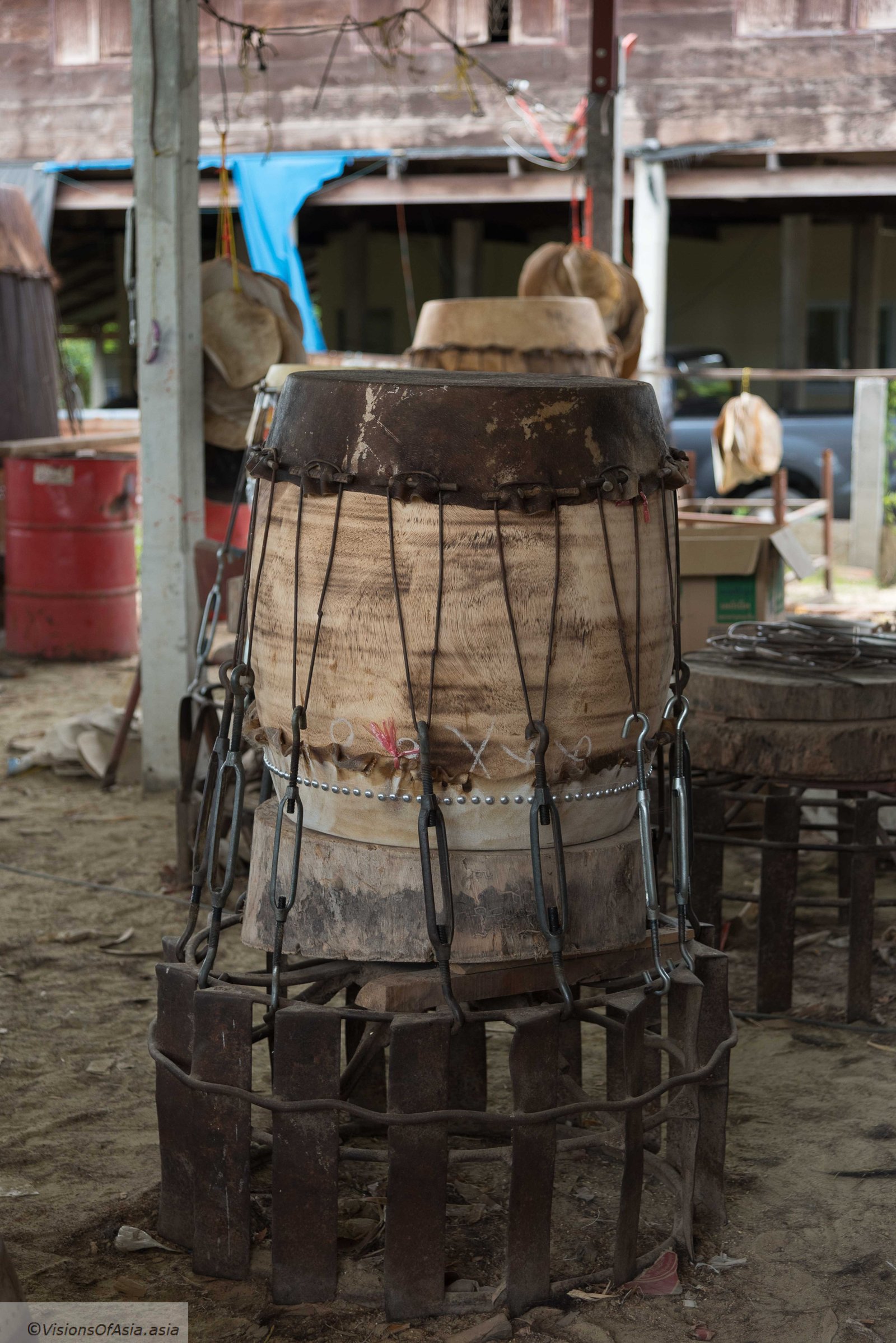
You can see below a short video filmed in Ekkarat in the same shop where these pictures were taken.
The final product
Obviously, walking you through each step of the process would be meaningless, if you did not have a glimpse to some of the finished products. Once the drum is completed, it is painted and the membrane is sometimes decorated as well. This drum is huge, basically man-size, so you have an idea of the tree trunk that was used to manufacture it.

In short, if you want to see a glimpse of traditional Thailand, do not miss Ekkarat, it is a worthwhile visit when you are near Ayutthaya or Suphanburi.
How to get there?
Ah, now that is the painful part. Getting to Ekkarat drum manufacturing village is as difficult as getting to Suphanburi, in fact. Given that the village is halfway between Suphanburi and Ayutthaya, it might be worth hitting it as a mid-point visit between the two cities. To the best of my knowledge, there is no public transportation that takes you straight from Bangkok to Ekkarat, so the best choice is still a private car or a tour visiting that place. You will find below the google maps location to help you.
Bonus
Finally before leaving, let me introduce you to a video filmed by students showing the visit of the village. If you understand some Thai, you might understand the exchanges going on.

